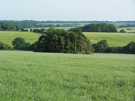Farmland outperforms commercial
Farmland property outperformed the commercial markets for the third consecutive year, according to the IPD UK Rural Investment Property Index


The IPD UK Rural Investment Property Index, which is sponsored by Smiths Gore, measures the performance of farmland and rural property worth just under £2bn held by institutional and private investors.
'Capital value growth was again the main driver of total return performance, delivering 8.2% return last year,' comments Gerald Fitzgerald, Head of Property Valuations and Investments. 'Of overarching importance to investors is the fact that farmland continues to perform well during recessions and is a useful asset to have in a portfolio.
'The capital drivers remain three-fold; farmers buying land when the opportunity arises, people purchasing for lifestyle and leisure reasons and investors purchasing for the fiscal benefits.
'Our research suggests that the farmland market will continue to perform well as pent-up demand is met with limited supply of market stock," adds Dr Jason Beedell.
Demand is increasing from all types of buyer - farmers, investors and non-farmers looking for attractive places to live. Because there are few opportunities to buy agricultural land with Agricultural Holdings Act tenancies, which is what investors are looking for due to the potential for capital value uplift when the tenancy ends, more investors are considering buying land with vacant possession and arranging for it to be farmed in order to get a foothold in the marketplace.
Although the recent election had the potential to rock sentiment in all markets, the threat to some of the new farm investment funds of changes to Inheritance Tax reliefs has receded with the advent of a Conservative-Liberal Democrat Government which supports farming.
'We expect capital values to rise in both the rural investment and vacant possession markets. Supply of land for sale remains tight and is likely to remain at low levels compared with the 1980s and 1990s. However, the reform of the Common Agricultural Policy is likely to start to affect land markets in the next 12-24 months as landowners won't sell their land in case they miss out on a windfall in the reform.'
Sign up for the Country Life Newsletter
Exquisite houses, the beauty of Nature, and how to get the most from your life, straight to your inbox.
In 2009, rural property delivered 8.2% return compared with residential property (11%), equities (30.1%), commercial property (3.5%) and bonds (-0.3%). However, over the three, five and ten year picture, rural property consistently outperformed all asset classes.
'Although rural property does not provide the high income return that other asset classes can produce in the short term, it does have long term potential for capital growth,' adds Mr Fitzgerald.
Country Life is unlike any other magazine: the only glossy weekly on the newsstand and the only magazine that has been guest-edited by HRH The King not once, but twice. It is a celebration of modern rural life and all its diverse joys and pleasures — that was first published in Queen Victoria's Diamond Jubilee year. Our eclectic mixture of witty and informative content — from the most up-to-date property news and commentary and a coveted glimpse inside some of the UK's best houses and gardens, to gardening, the arts and interior design, written by experts in their field — still cannot be found in print or online, anywhere else.
-
 ‘It had the air of an ex-rental, and that’s putting it politely’: How an antique dealer transformed a run-down Georgian house in Chatham Dockyards
‘It had the air of an ex-rental, and that’s putting it politely’: How an antique dealer transformed a run-down Georgian house in Chatham DockyardsAn antique dealer with an eye for colour has rescued an 18th-century house from years of neglect with the help of the team at Mylands.
By Arabella Youens Published
-
 You're having a giraffe: Country Life Quiz of the Day, April 25, 2025
You're having a giraffe: Country Life Quiz of the Day, April 25, 2025Friday's Quiz of the Day brings your opera, marathons and a Spanish landmark.
By Toby Keel Published
